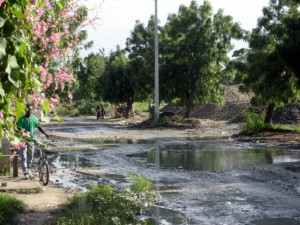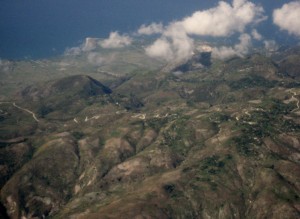Resurrection and Reforestation
As the eastern seaboard of the United States begins to dig itself out of the mess that Hurricane Sandy left in her wake, the work ahead seems staggering. The muck and sludge is almost unfathomable. The destruction and number of lives lost are beyond heartbreaking. How do you clean up? Where do you even start?
Those same questions apply in Haiti as well, for it too is recovering from its own battle against Sandy’s wrath. The Caribbean islands are besieged regularly during hurricane season, which runs roughly from June through November. The reality there is that 6-8 hurricanes will develop annually in the Tropical Atlantic Basin, though some years are better than that and some are worse. 2010 saw a “bumper crop” with 11 named hurricanes. What makes Haiti so vulnerable to massive destruction in violent weather is its lack of natural tree cover, which exacerbates water run-off and mudslides and results in tremendous erosion, soil degradation, and watershed destruction in addition to loss of property and life.
In fact, only two percent of Haiti’s original forests remain intact. Deforestation has a long and sordid history on the island of Hispanola, dating back to colonial times. With the arrival of European colonists, land was cleared of trees so that plantations could be established. Not only that, valuable tropical woods were harvested with reckless abandon and sold to eager markets abroad. After the colonial period, Haiti suffered from its isolation, and slash-and burn subsistence agriculture began taking its toll.
Now in the 21st century, the culprit is an insatiable need for household cooking fuel. Trees double as a source of fuel and cash for families who not only use the wood to cook with but also sell it as charcoal in energy-starved Port-au-Prince. (Charcoal is made by burning wood and other carbon-rich substances in an oxygen-proof furnace.) Over time, according to Newsweek and The Daily Beast, the charcoal trade has grown to account for 20 percent of the rural economy and 80 percent of the country’s energy supply. Haitians currently burn an estimated 30 million trees’ worth of charcoal annually.
The barren landscape tells the story of 36 million tons of topsoil being eroded by wind and rain each year, silting lakes and waterways and carrying away nutrients upon which agriculture depends. Meager drainage systems that do exist suffer extensive damage during storms and clean water sources are compromised, elevating the danger of water-borne disease, cholera being a primary threat.
As if that isn’t alarming enough, results of a recent geological study conducted at the University of Miami indicated that so much of Haiti’s mountainsides have eroded due to deforestation that it may have actually weakened the earth’s crust and contributed to the severity of the 2010 earthquake. The researchers suggest that landslides and heavy rains have carried so much eroded material downstream over time that the surface load of the crust was greatly diminished. Fractures in Earth’s bedrock from the movement of tectonic plates, known as faults, build up stress as they attempt to slide past each other, periodically releasing the stress in the form of an earthquake. With critically reduced load-bearing capability in the denuded mountains of Haiti, the stage was set for that catastrophe.
Fortunately, there is hope on the horizon. Solar and hydropower, as well as biofuels, have all  been used in Haiti with encouraging results and their potentials can be further pressed . Until these renewable energy sources can be maximized, imports of subsidized propane from Dominican Republic can be increased. In combination, these alternatives can eradicate the need to harvest trees for charcoal produced-energy. There have been victories outside of Haiti, too which can be drawn upon and adapted. In Ethiopia, it was political will that turned the tide of environmental degradation, in Uganda, it was a civil movement. Money is, of course, a vital component, but donors are willing to line up behind success. Clearly, it will take popular action, governmental resolve, and international support to restore Haiti’s forests. As one environmental aid worker observed, “Haiti’s resurrection begins here.”
been used in Haiti with encouraging results and their potentials can be further pressed . Until these renewable energy sources can be maximized, imports of subsidized propane from Dominican Republic can be increased. In combination, these alternatives can eradicate the need to harvest trees for charcoal produced-energy. There have been victories outside of Haiti, too which can be drawn upon and adapted. In Ethiopia, it was political will that turned the tide of environmental degradation, in Uganda, it was a civil movement. Money is, of course, a vital component, but donors are willing to line up behind success. Clearly, it will take popular action, governmental resolve, and international support to restore Haiti’s forests. As one environmental aid worker observed, “Haiti’s resurrection begins here.”
Contributed by Linda for It’s Cactus/Beyond Borders
